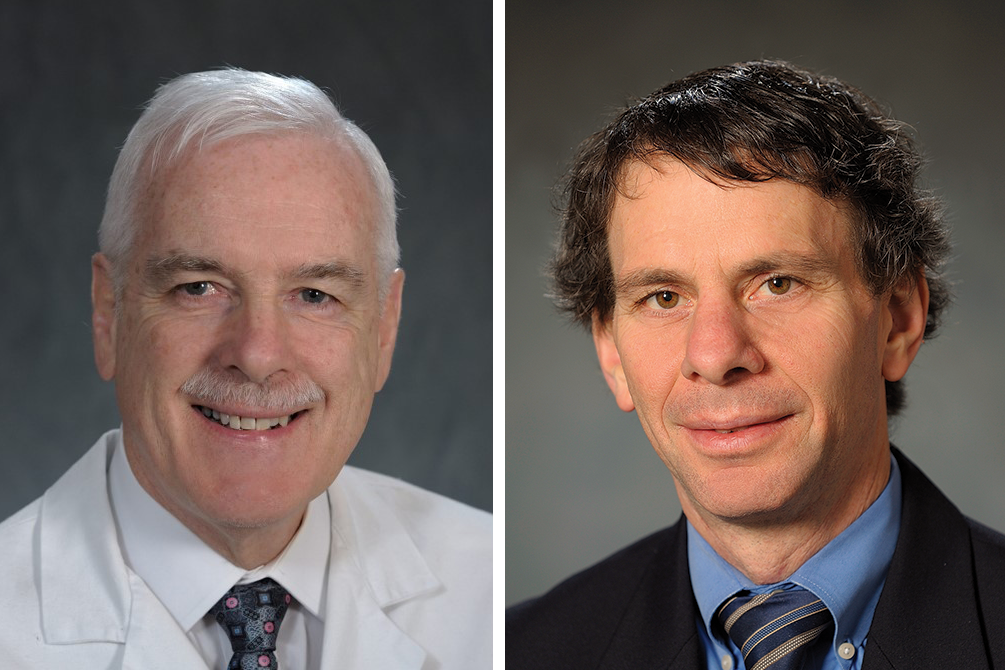
Now Enrolling: EA2205 for a Rare Form of Liver Cancer
February 24, 2022
News in Brief, April 2022
April 15, 2022From the Co-Chairs, February 2022


By Peter J. O’Dwyer, MD (left)
and Mitchell D. Schnall, MD, PhD
One might justifiably assert that the existence of ECOG-ACRIN is a result of the passage of the National Cancer Act of 1971. A wide range of groups have recognized the 50th anniversary of the Act’s passing. Perhaps most importantly, over the last six months The Cancer Letter has featured the Act’s contribution to the history of cancer research. Kudos to Paul Goldberg and to Matthew Ong for much-needed documentation of the stories of those involved. Also to Dr. Charles Fuchs and Professor Abbe Gluck, both until recently on the faculty of Medicine and Law, respectively, at Yale University, who have published an in-depth assessment of the progress that resulted from the Act. They and their contributors outline the multifaceted series of steps needed to advance that progress—a new New Deal (Gluck AR, Fuchs CS, Rusyn E, et al. A New Deal for Cancer: Lessons from a 50 Year War. Public Affairs; 2021). Their analysis of where we are, and of the elements that constitute our particular microenvironment is in The Cancer Letter. An additional perspective on the impact of the Act is cogently provided in an unsigned editorial in the current issue of Nature (The ‘war on cancer’ isn’t yet won. Nature. 2022;601(7893):297-297. doi:10.1038/d41586-022-00109-3).
It has always seemed remarkable that the advocacy of Mary Lasker and her slight cabal of influential opinion leaders was able to convince Richard Nixon that a “War on Cancer” was timely, feasible, politically advantageous—and winnable. The Nature editorial writer highlights advisors in Senate deliberations (in 1970) who asserted that: “...the long-term future may belong to the immunologist and the geneticist, the intermediate future to the chemotherapist, but the present and immediate future belongs in the main to the surgeon, and to some extent to the radiologist.” The writer also draws attention to an opposing view of those who criticized Nixon’s effort as naïve, the thought that cancer would be eliminated as a problem in 3-5 years. It turned out that both views were prescient.
The successes of the past 50 years are undeniable. Knowledge of the biological characteristics of established cancers has been defined in large-scale sequencing projects such as the Cancer Genome Atlas. In turn, these projects have elucidated the step-wise acquisition of molecular aberrations that change a normal cell into a malignant one. The concept of a progression of lesions over time provided the rationale for screening—and early intervention—which have changed both cancer risk and mortality in these 50 years. Tailoring therapy to molecular features of the cancer, and especially the emergence of immune therapies in the past 15 years, has caused the mortality curves of lung and other cancers to finally bend downward.
The title of the Nature editorial is “The ‘war on cancer’ isn’t yet won.” It references the call of the director of the National Cancer Institute, Dr. Norman Sharpless, that we are most likely to match our previous successes in the next 50 years by: maintaining the research to discover new therapies based on new insights into cancer biology; focusing on patient-centered advances to address treatment tolerability; directing treatment in a patient-informed way; and ensuring the relevance of discoveries to the broad population (by removing barriers to the broadest racial/ethnic/socioeconomic participation in the research).
This anniversary is a reason to celebrate the amazing progress—and now to redouble our efforts.
Read the February 2022 issue here.
![ECOG-ACRIN logo[19516]275×75](https://blog-ecog-acrin.org/wp-content/uploads/2021/03/ECOG-ACRIN-logo19516275x75.png)
